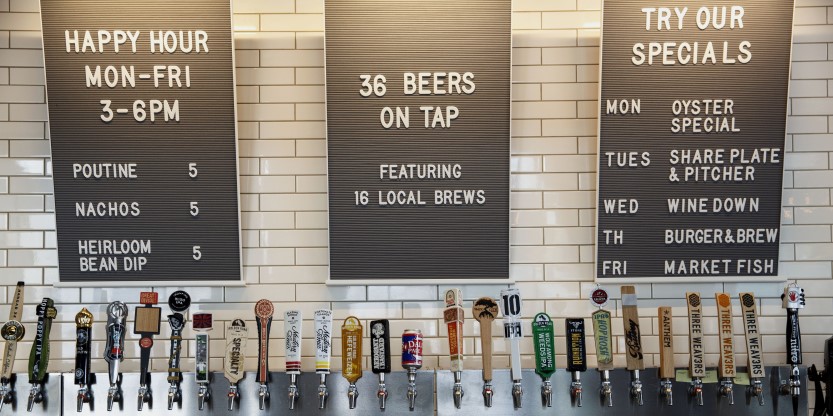Why grocery stores are looking more and more like restaurants
The ‘grocerant’ is on the rise as consumer preferences shift toward to-go food
While grocery stores have long offered pre-made food options and even seating areas, lately they are evolving to become pseudo-restaurants.
It’s a change that’s occurring alongside the global rise of food halls and consumers’ increasing preference for to-go food.
Shoppers at a Whole Foods in Los Angeles, for example, have the option of heading to the bar — whether or not they are going on a grocery run — and enjoying a cocktail and appetizer. The grocer Coles recently opened its first food-hall-slash-supermarket in Melbourne, which includes a cheese shop, sushi station, and do-it-yourself pizza bar.
Grocery stores worldwide are expanding their pre-made food offerings beyond standard fixtures like the rotisserie chicken rack, with the most progressive operators bringing in food halls and chef-helmed eateries as a way to capitalize on the time-crunched grocery shopper who is increasingly happy to dine where they shop.
“The amount of money that Americans spend dining out has now surpassed the amount spent at the supermarket,” says James Cook, Americas Director of Research, Retail, JLL. “That makes grocery stores nervous, and to combat this, they’re attempting to convert grocery shoppers into restaurant-goers, and even to attract purely to-go-food seekers who may have otherwise used Uber Eats.”
Changing preferences
In 2019, Americans spent $863 billion eating out, up from $590 billion in 2010, according to statistics from the National Restaurant Association. As a result, there’s a flurry of movement in what some are calling the ‘grocerant’ space.
Kroger’s 52,000-square-foot store in downtown Cincinnati, which opened last fall, has the company’s first-ever food hall, On the Rhine Eatery. There, shoppers can choose between Django Western Taco and the all-American diner food at Queen City Whip. There is also Kitchen 1883 Cafe and Bar, a full-service, sit-down restaurant. Various Wegman’s locations in New York, Pennsylvania and Virginia now have “a full-blown Irish pub inside, plus about three or four times as much prepared food as your typical grocery store,” Cook says.
The offerings are enticing enough to draw in diners looking solely for a pre-made meal, instead of as an afterthought for the consumers already shopping there.
“They have become their own destination,” Cook says. “Especially in a food hall setup where you have a variety of options that will appeal to a family of varying tastes and ages.”
Allocating space
To execute a ‘grocerant’ concept, grocery store operators are having to think differently about how they use their spaces – which can mean streamlining floorplans to allot a smaller footprint to freezer space and more to takeout.
“Fifteen years ago, there was a battle amongst grocery stores to get bigger and bigger,” Cook says. “We are now seeing a reversal of that, with smaller footprints and more thoughtfully curated selections. If grocers want to expand their prepared food offerings, they have to think holistically about what sections they are going to slim down or cut.”
Expanding into the restaurant-esque field requires significant up-front costs, so supermarket operators are wise to undergo extensive research to see what works in their location before making decisions, Cook says.
“There is a lot of investment that goes into being able to offer prepared foods —specifically oven hoods, stoves, venting and other equipment — so the operators have to be pretty sure that the investment is going to pay off,” he says.
On the upside: prepared foods have a much higher profit margin than other grocery items.
“Grocers’ hope that shoppers will come into the store to shop, and then get a meal while they’re there,” Cook says. “But more and more, it’s becoming ‘come in to eat, and grab a few items as an afterthought.’"




